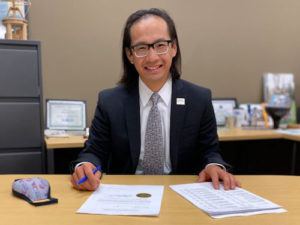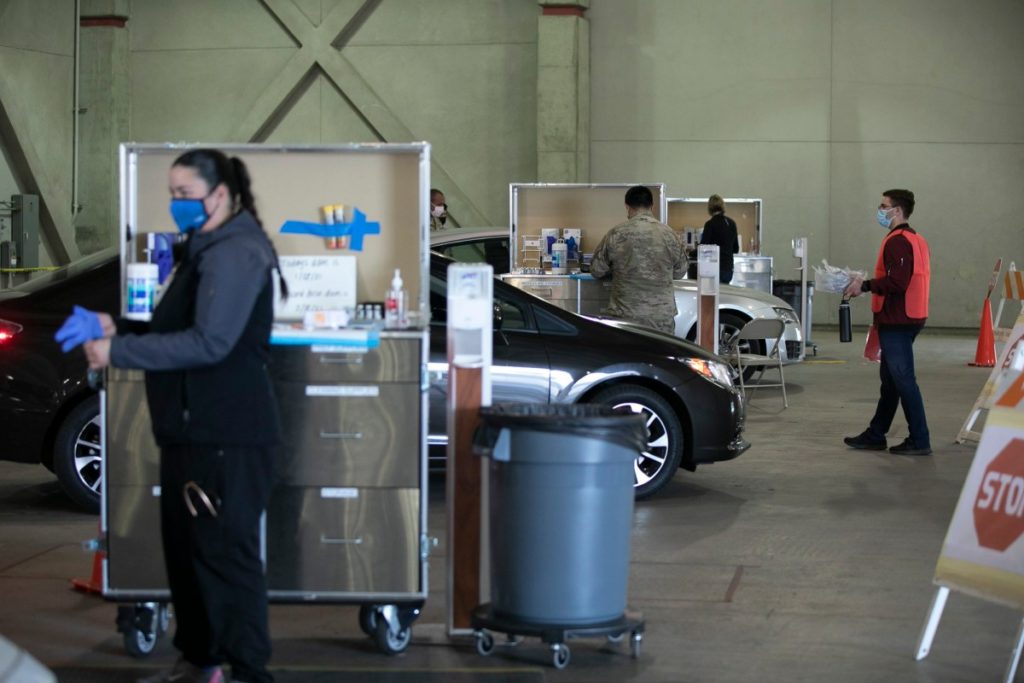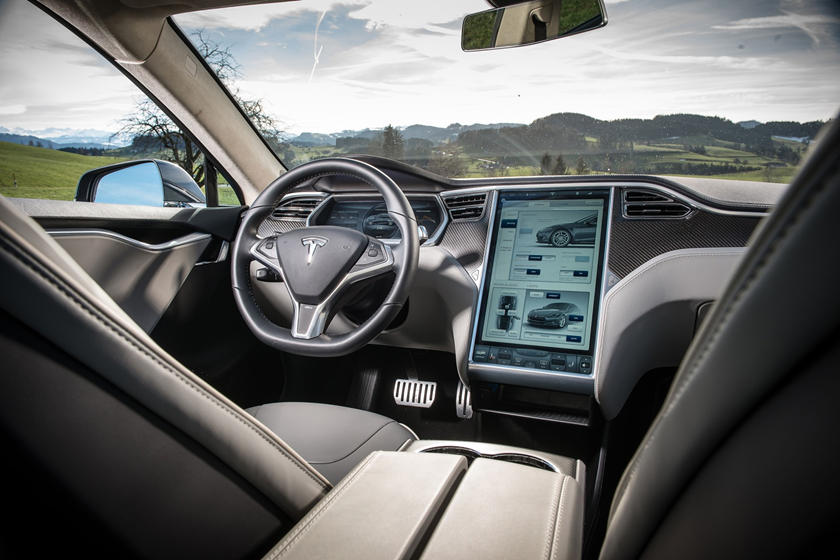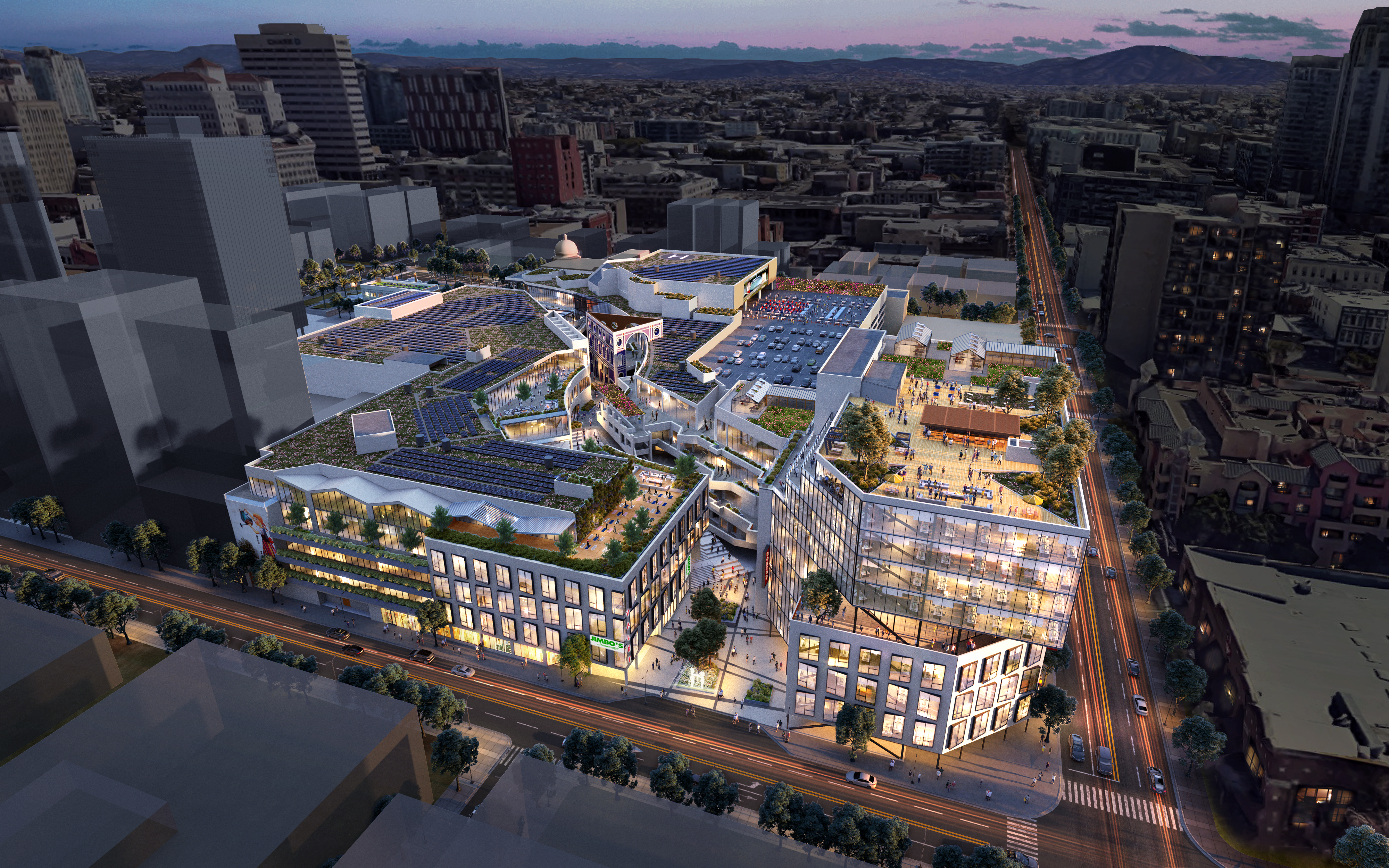Daily Business Report-Jan. 25, 2021
Tesla is ranked as the world’s top car manufacturer. Above, the Tesla Model S interior. (Courtesy Tesla Inc.)
The World’s Top Car Manufacturers
by Market Capitalization
Ever since Apple and other Big Tech companies hit a market capitalization of $1 trillion, many sectors are revving to follow suit—including the automotive industry.
But among those car brands racing to reach this total valuation, some are closer to the finish line than others. This visualization uses data from Yahoo Finance to rank the world’s top car manufacturers by market capitalization.
What could this spell for the future of the automotive industry?
It’s clear one company is pulling far ahead of the pack. In the competition to clinch this coveted title, Tesla is the undoubted favorite so far.
The electric vehicle (EV) and clean energy company first became the world’s most valuable car manufacturer in June 2020, and shows no signs of slowing its trajectory.
Tesla’s competitive advantage comes as a result of its dedicated emphasis on research and development (R&D). In fact, many of its rivals have admitted that Tesla’s electronics far surpass their own—a teardown revealed that its batteries and AI chips are roughly six years ahead of other industry giants such as Toyota and Volkswagen.
The Green Revolution is Underway
The sheer growth of Tesla may spell the inevitability of a green revolution in the industry. Already, many major brands have followed in the company’s tracks, announcing their own ambitious plans to add more EVs to their vehicle line-ups.
Here’s how a selection of car manufacturers are embracing the electric future:
Toyota: Ranked #2
The second-most valuable car manufacturer in the world, Toyota is steadily ramping up its EV output. In 2020, it produced 10,000 EVs and plans to increase this to 30,000 in 2021.
Through this gradual increase, the company hopes to hit an expected target of 500,000 EVs by 2025. Toyota also aims to debut 10 new models internationally to achieve this goal.
Volkswagen: Ranked #3
By 2025, Volkswagen plans to invest $86 billion into digital and EV technologies. Considering the car manufacturer generates the most gross revenue per second of all automakers, it’s no wonder Volkswagen is looking to the future in order to keep such numbers up.
The company is also well-positioned to ride the wave of a potential consumer shift towards EVs in Europe. In response to the region’s strict emissions targets, Volkswagen upped its planned sales proportions for European hybrid and EV sales from 40% to 60% by 2030.
BYD and Nio: Ranked #4-5
China jumped on the electric bandwagon early. Eager to make its mark as a global leader in the emerging technology of lithium ion batteries (an essential component of any EV), the Chinese government handed out billions of dollars in subsidies—fueling the growths of domestic car manufacturers BYD and Nio alike.
BYD gained the interest and attention of its billionaire backer Warren Buffett, while Nio is China’s response to Tesla and an attempt to capture the EV market locally.
General Motors: Ranked #7
Also with a 2025 target year in mind, General Motors is investing $27 billion into electric and fully autonomous vehicles. That’s just the tip of the iceberg, too—the company also hopes to launch 30 new fully electric vehicles by the same year.
One particular factor is giving GM confidence: its new EV battery creations. They will be able to extend the range of its new EVs to 400 miles (644km) on a single charge, at a rate that rivals Tesla’s Model S.
Stellantis: Ranked #9
In a long-anticipated move, Fiat Chrysler and Peugeot S.A. finalized their merger into Stellantis N.V. on January 16, 2021.
With the combined forces and funds of a $52 billion deal, the new Dutch-based car manufacturer hopes to rival bigger brands and race even more quickly towards the electric shift.
Honda: Ranked #11
Speaking of fast-paced races, Honda has decided to bow out of future Formula One (F1) World Championships. As these competitions were usually a way for the company to show off its engineering prowess, the move was a surprising one.
However, there’s a noble reason behind this decision. Honda is choosing instead to focus on its commitment to become carbon neutral by 2050. To do so, it’ll be shifting its financial resources away from F1 and towards R&D into fuel cell vehicle (FCV) and battery EV (BEV) technologies.
Ford: Ranked #15
Ford knows exactly what its fans want. In that regard, its electrification plans begin with its most popular commercial cars, such as the Mustang Mach-E SUV. This is Ford’s major strategy for attracting new EV buyers, part of a larger $11.5 billion investment agenda into EVs through 2022.
While the car’s specs compare to Tesla’s Model Y, its engineers also drew from the iPhone and Netflix to incorporate an infotainment system and driver profiles to create a truly tech-first specimen.
Speeding into the Horizon
As more and more companies enter the racetrack, EV innovation across the entire industry may power the move to lower overall costs, extend the total range of vehicles, and put any other concerns by potential buyers to rest.
While Tesla is currently in the best position to become the first car manufacturer to reach the $1 trillion milestone, how long will it be for the others to catch up?
View the high-resolution of the infographic by clicking here.
______________________________________________________________________
Registrar Michael Vu named county
assistant chief administrative officer

Registrar of Voters Michael Vu is now taking on the responsibilities of assistant chief administrative officer for the County of San Diego. Vu began his new role Jan. 8 after working for the County for nearly 14 years, the last eight as Registrar.
The Chief Administrative Office is responsible for implementing policy decisions from the Board of Supervisors. The office also manages day-to-day operations.
Chief Administrative Officer Helen Robbins-Meyer praised Vu for working tirelessly to engage the San Diego community in a way that represents county values. “Not only has he enjoyed taking on new challenges, but he has been innovative and resourceful in responding to them,” said Robbins-Meyer. “For this, he has gained the respect and trust of many within our community, including community-based organizations, advocacy groups, elected officials and the media.”
As Vu takes on his new responsibilities, he will also continue to lead the Registrar of Voters particularly now that a special vacancy election is expected for the 79th Assembly District. Assistant Registrar Cynthia Paes will serve as the acting registrar.
Vu succeeds Tracy Sandoval as assistant CAO. Sandoval left the county last October to become the CEO for the San Diego County Employees Retirement Association.

State activates MyTurn vaccine clearinghouse website
By Barbara Feder Ostrov | CalMatters
Facing criticism for its chaotic COVID-19 vaccine rollout, California has quietly launched a long-promised statewide website to help residents learn when they are eligible to receive the vaccine and schedule appointments.
Called MyTurn (myturn.ca.gov), the online registry has not yet been widely promoted and still is a work in progress. Gov. Gavin Newsom was expected to formally unveil the registry this week.
Californians can immediately register on the website to be notified when it’s their turn for the vaccine in a number of counties. But for now, it only can be used to schedule appointments in Los Angeles County — and then only if they are health care workers or aged 65 and older.
MyTurn is expected to improve in the coming weeks as more counties are able to link their registration systems to the state’s online platform. At least one local official has alerted their constituents to it, but the state has not yet announced or publicized it.
The website advises people without email addresses or a mobile phone to call the state’s COVID hotline at 833-422-4255.
Greater San Diego Association of Realtors partners
with American Arbitration Association
The Greater San Diego Association of Realtors (SDAR) has partnered with the American Arbitration Association (AAA) to better protect Realtors and their businesses.
AAA will provide new training for SDAR mediators and connect them to skilled arbitrators to facilitate a smooth transition from mediation to arbitration. These services are typically needed to settle failure to disclose claims such as a seller’s failure to reveal defects of a property. This relationship will simplify the submission of inquiries and requests, allowing real estate professionals to more easily settle claims prior to litigation.
“Many Realtors have been involved in a ‘failure to disclose’ claim and are familiar with the process, and this partnership is going to be a progressive change for arbitration,” said Michael Mercurio, CEO of SDAR and San Diego Multiple Listing Service. “We always aim to provide our members with top-notch services, and those now provided by AAA in collaboration with our Real Estate Mediation Center are no exception.”
SANDAG adopts resolution to increase
broadband access in San Diego region
The SANDAG Board of Directors has adopted a resolution to support increased broadband access throughout the region to help bridge the digital divide – the gap that exists between those with and without access to information and communications technology such as broadband, computers, and smart phones. The COVID-19 pandemic has exacerbated the issues caused by the digital divide, limiting people’s ability to work from home or participate in virtual classroom settings.
A SANDAG report highlighted digital divide disparities in low-income and rural households:
- 23 percent of households earning less than $50,000 do not have a broadband subscription.
- Only 42 percent of people who live in unincorporated parts of San Diego County have fixed broadband, compared with 97 percent of people in urban areas.
- 20 – 40 percent of students in many local districts are under-connected or lack home Internet access.
SANDAG is currently conducting research and collecting data to help inform the development of a Regional Digital Equity Strategy and Action Plan, anticipated to be completed later this year.
San Diego startups raised record
$6.1 billion in venture capital in 2020
Fueled by a barrage of big deals late in the year, San Diego startups raised a record $6.1 billion in venture capital in 2020, despite headwinds from the COVID-19 pandemic.
The gains came largely from biotechnology/life science companies, which saw a flood of investments related to the pandemic. But there was also solid fundraising from software, autonomous driving, logistics and other technology firms.
Thermo Fisher to buy Mesa Biotech for $450 million
Carlsbad’s Thermo Fisher Scientific will purchase Sorrento Valley health care test developer Mesa Biotech for $450 million. Mesa Biotech creates rapid testing for a variety of infectious diseases including the flu and strep throat, and was among the first to develop point-of-care COVID-19 tests.
General Atomics successfully completes
self-protection system on RPA
General Atomics Aeronautical Systems Inc. (GA-ASI) has successfully completed flight testing of a newly developed Self-Protection Pod on an MQ-9 Remotely Piloted Aircraft.
The project was executed as part of a Cooperative Research and Development Agreement with U.S. Special Operations Command, and with the support of the Air National Guard, the U.S. Navy and industry partners Raytheon Intelligence & Space, BAE Systems, Leonardo, Leonardo DRS, and Terma North America. The demo was held Oct. 28, 2020 at the Yuma Proving Grounds.
During the testing, the MQ-9 was able to successfully track Radio Frequency and Infrared missile threats, deploy countermeasures, and provide real-time threat awareness and protection in a simulated contested environment.
Groundbreaking flow battery project helping
to advance clean energy microgrids
Two years after becoming the first battery of its kind to be connected to the California grid to help support reliability and maximize the use of clean energy, the vanadium redox flow (VRF) battery based at a San Diego Gas & Electric substation is again breaking new ground. This time, the emerging battery technology is being tested as a means to help achieve zero-emission microgrids – a tool to keep communities and critical facilities powered with clean energy during adverse weather conditions and Public Safety Power Shutoffs.
With the support of Japan’s New Energy and Industrial Technology Development Organization (NEDO) and the California Governor’s Office of Business and Economic Development (GO-Biz), SDG&E and Sumitomo Electric (SEI) launched the demonstration project in 2017. The collaboration was recently extended for another year through the end of 2021, to further test the battery’s microgrid capabilities and maximize its ability to support the grid with ancillary services such as voltage and frequency regulation.
Unlike the most prevalent energy storage technology (stacked cells of lithium-ion batteries), the flow battery being tested consists of tanks of liquid electrolytes and pumps. It began participating in the California Independent System Operator’s (CAISO) wholesale electricity markets in December 2018 and was used last summer to help minimize the impact of rotating outages during a record heatwave.
San Diegans 65 and up now eligible
for vaccinations at county sites
Public health officials on Saturday expanded the category of those eligible to receive a coronavirus vaccination at San Diego County sites to all residents aged 65 and older.
“As I indicated a few weeks ago, the county anticipated expanding eligibility to individuals 65 years of age and older the week of Jan. 25 as part of the continued focus on those at the greatest risk,” said Dr. Wilma Wooten, the county’s public health officer.
“With a number of health care providers now vaccinating in the age group, and the UC San Diego Health Super Station having a surplus of appointments, the decision was made this afternoon,” she said.
In addition to that site at Petco Park, the county has opened a second super station at the old Sears building in Chula Vista.
Appointments are still required and vaccinations are subject to availability based on supply, Wooten said. The expanded eligibility applies to all sites providing the county vaccine.
More information about the county’s vaccination program can be seen and reservations made at vaccinationsuperstationsd.com.
Only health care workers and those 65 and older can visit vaccination sites, Wooten said. Residents are encouraged to first contact their doctor or health care provider to request the vaccine, but if none is available, they should make an appointment for a county site.
Appointments are required; walk-ups and drive-ups without appointments will be turned away.
Do not schedule an appointment if you have COVID-19 or are sick, Wooten said.



